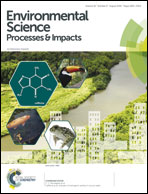First evaluation of the threat posed by antifouling biocides in the Southern Adriatic Sea
Abstract
The CARISMA project (characterization and ecological risk analysis of antifouling biocides in the Southern Adriatic Sea) aims to appraise the quality of the Southern Adriatic Sea between Italy (Apulia region) and Albania and, in particular, the impact due to the use of biocidal antifouling coatings. Under this project, a preliminary survey at the main hot spots of contamination (e.g. ports and marinas) was conducted at the end of the nautical season in 2012. Chemical seawater analyses were complemented with ecotoxicological assays and the results were analyzed by principal component analysis (PCA). As expected, PCA splits the Albanian and Italian ports, according to the different degrees of contamination indicated for the two countries by the experimental data, highlighting the most critical situation in one port of Apulia. In addition, in order to assess the potential adverse ecological effects posed by antifouling agents (i.e. tributyltin (TBT)–irgarol–diuron) on non-target marine organisms, hazard quotients (HQ) were calculated. The results showed a low risk posed by irgarol and diuron whereas the probability of adverse effects was high in the case of TBT.


 Please wait while we load your content...
Please wait while we load your content...